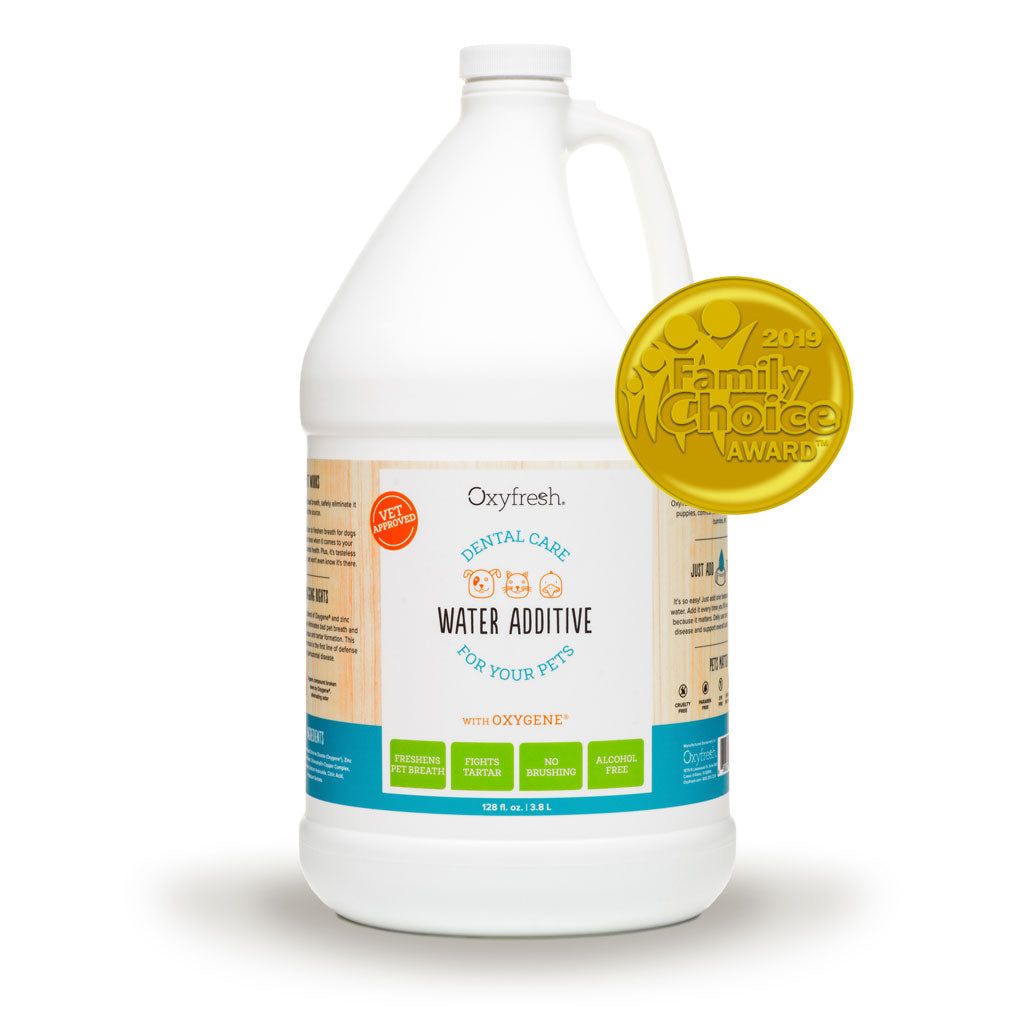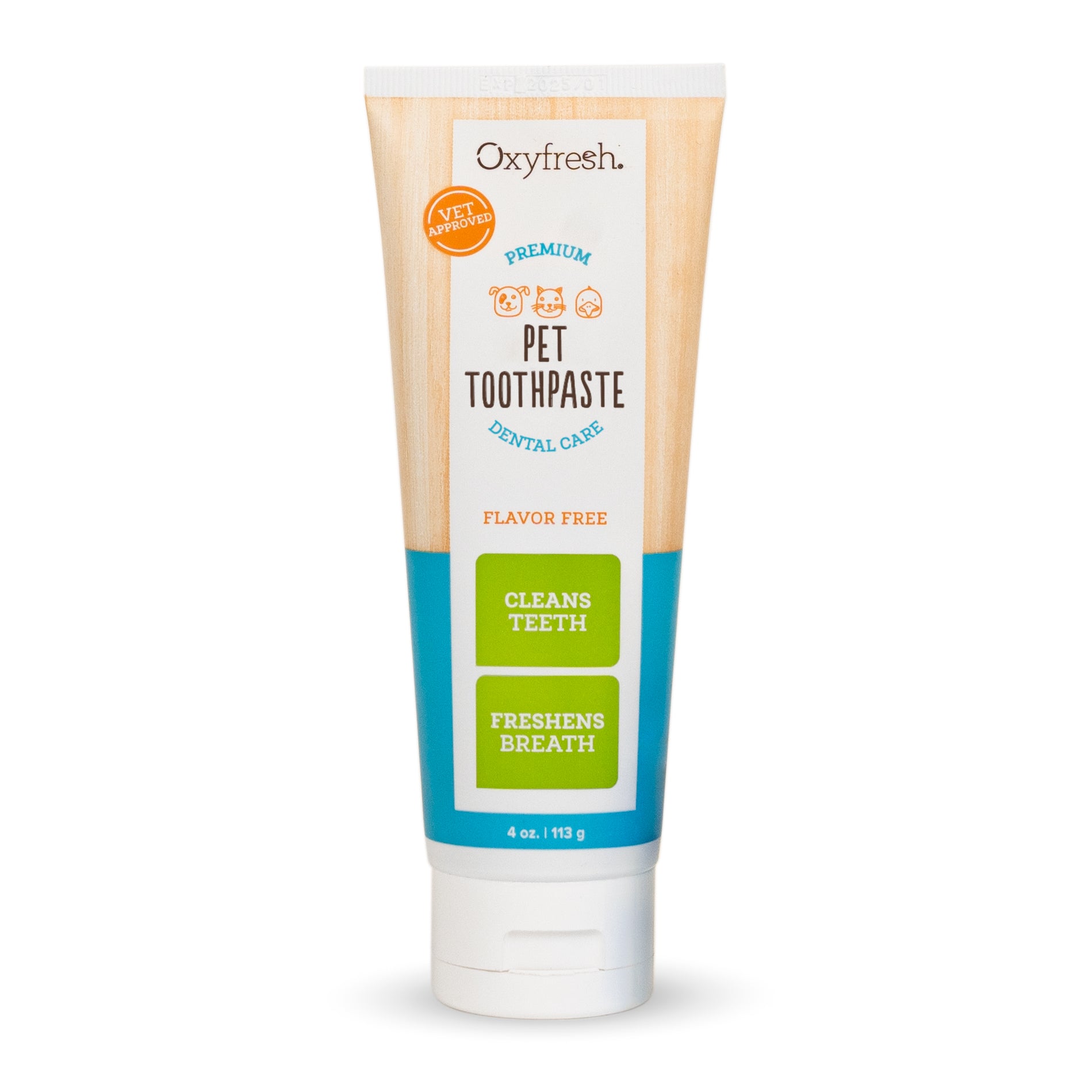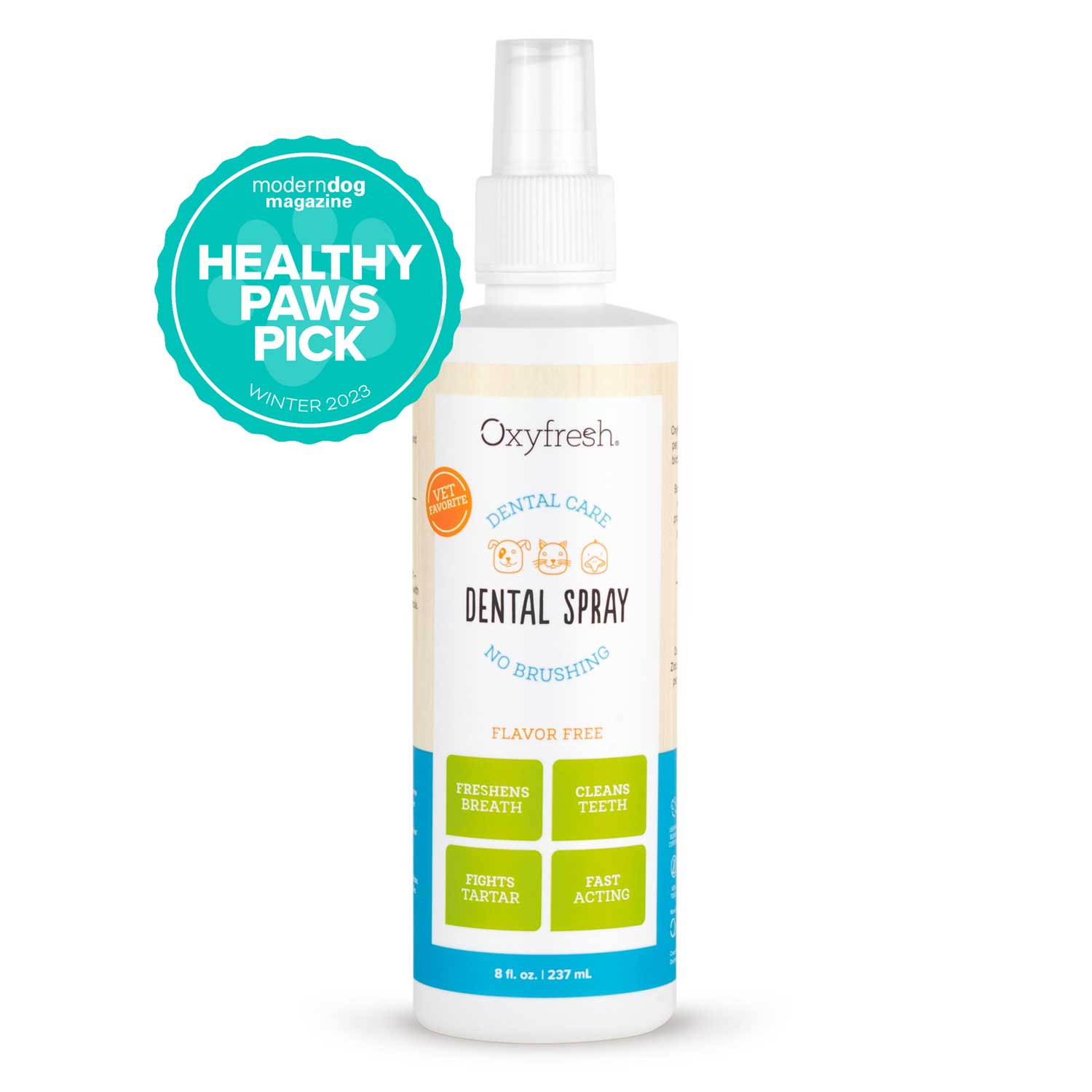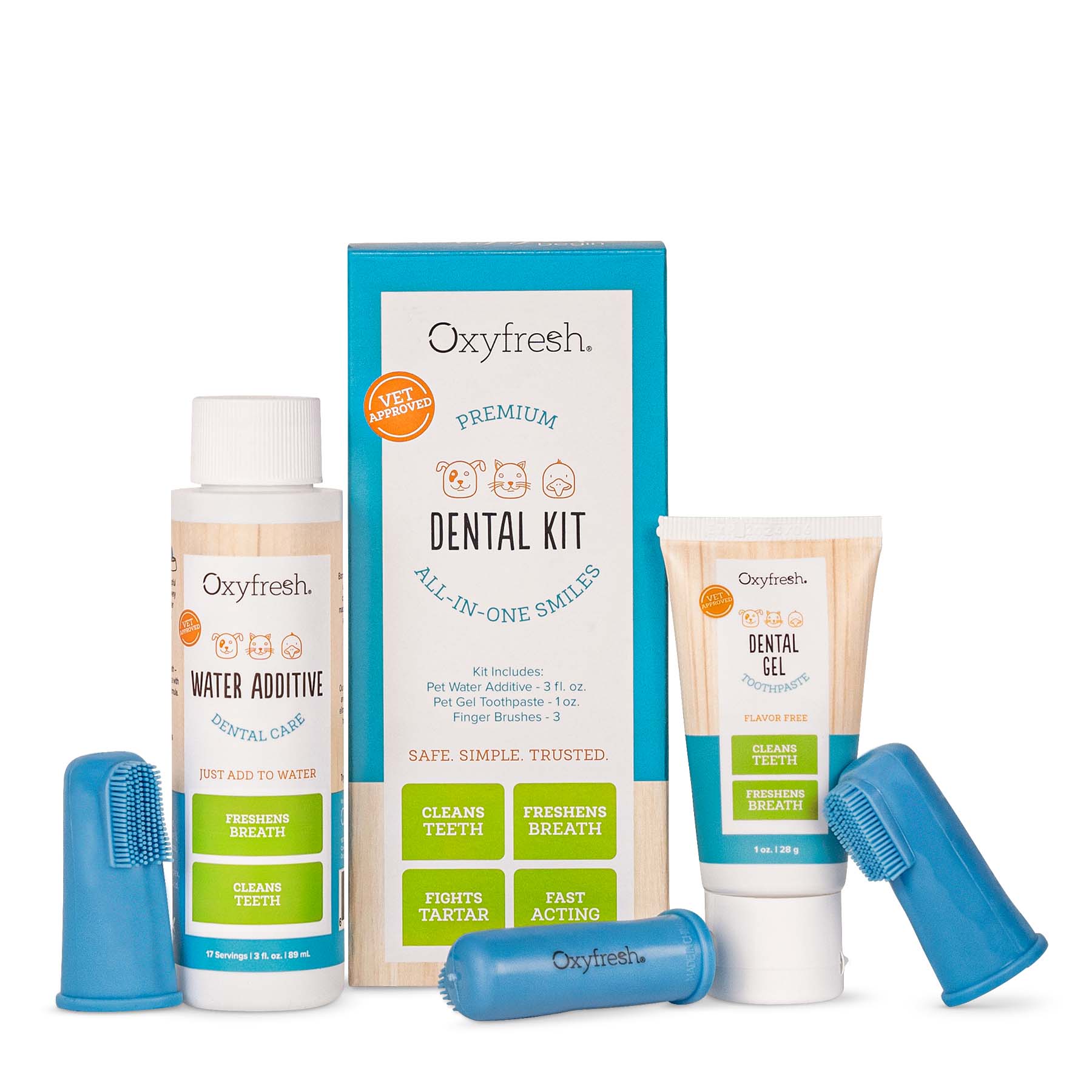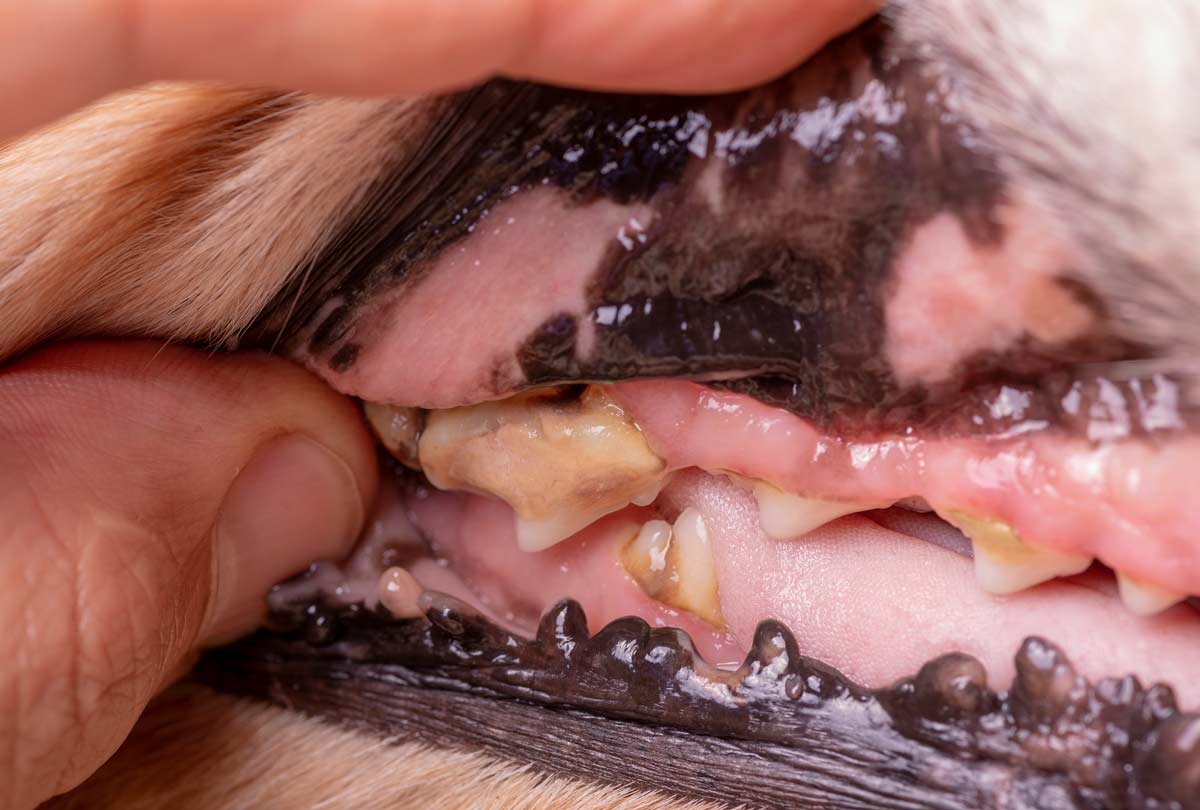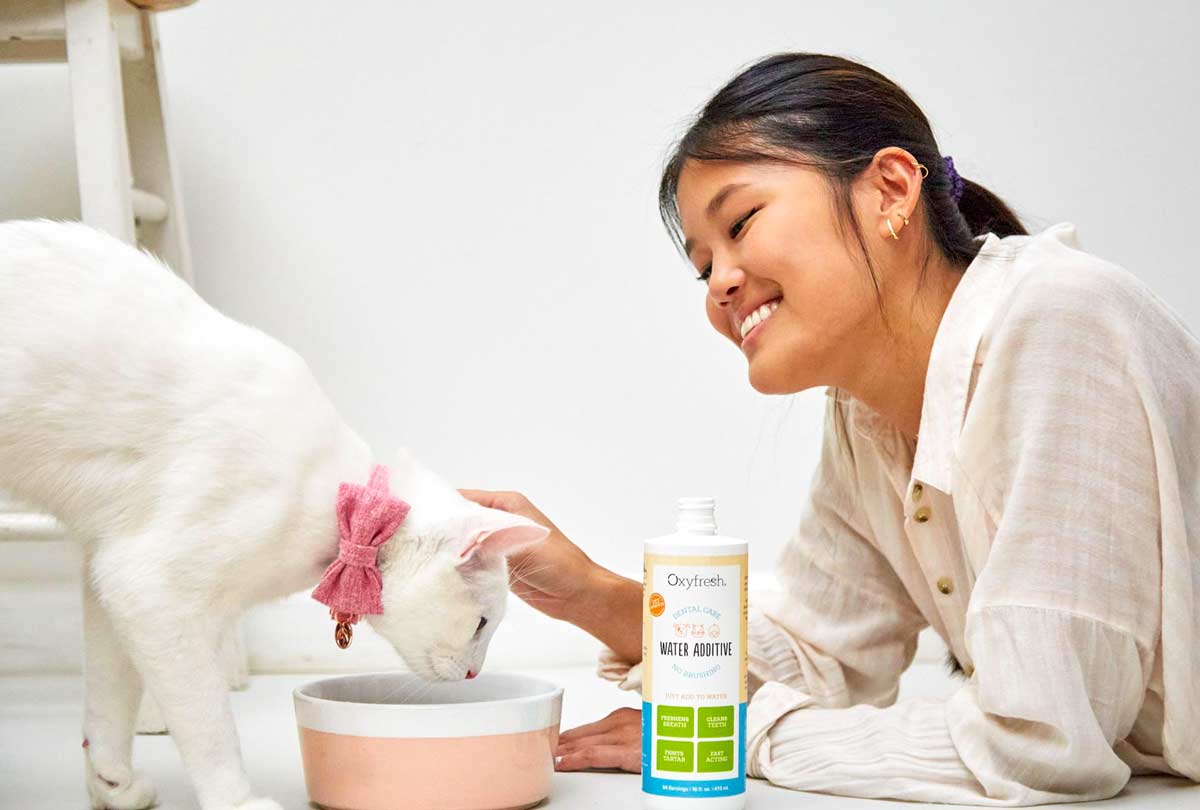Pee-yew! When you’re cuddling with your cat, are you getting blasts of stinky breath? Don’t be too quick to blame that can of tuna! Bad cat breath is often the first sign of cat gingivitis, a serious oral health condition that affects 7 in 10 cats by age 3.
What can you do to protect your sweet furball? Keep reading and we’ll reveal all ... including a ridiculously easy way to help prevent (and even reverse!) cat gingivitis.
What Is Gingivitis in Cats?
Cat gingivitis is the earliest (and 100% reversible) stage of gum disease. (There are four stages in total.) It’s where the gum tissue directly bordering a cat’s teeth becomes red and inflamed.
Plaque is the starting point of gingivitis in cats. As food particles and bacteria mix and mingle, plaque – a sticky, gummy film – forms along the teeth and gum line. If you don’t remove the plaque promptly, it will begin to harden into tartar (calculus) within 24 hours.
Tartar is filled with harmful bacteria and can eventually build up under the cat's gum line, causing the teeth to separate from the gums. (Sound painful? It is, yet a cat’s instinct is to hide their pain.)
This deterioration of the structures that hold the teeth in place is the most advanced stage of gum disease called feline periodontitis. At this stage, gum disease is not reversable and requires immediate intervention from the vet.
Advanced feline periodontitis doesn’t just affect the quality of a cat’s life; it can take YEARS off their lives when bacteria from the gum infection spreads to the vital organs. That’s why it’s so important to catch the warning signs early on.
Signs of Cat Gingivitis
Cat gingivitis creeps up slowly. When a cat parent does finally become aware of a problem, it’s typically because they start to notice their cat’s bad breath. (Anything beyond a mild, fishy smell is a red flag.) In addition to the tell-tale red gums of gingivitis, you’ll likely notice yellow-brown tartar buildup on your cat’s teeth.
But how do you know if your cat’s gingivitis has progressed to the later stages of gum disease?
Here's what to look for:
- Bleeding gums (you may notice blood on their toys or in their water bowl)
- Not wanting to be touched around the face
- Behavioral changes, like isolating and acting irritable
- Change in eating habits: chewing on one side of the mouth, difficulty chewing, crying at meals, or picking up food and then dropping it
- Excessive drooling
- Weight loss
A visit to the vet will help determine what stage of dental disease your feline is in, and the best remedy to get ‘em smiling again.
Causes of Gingivitis in Cats
No surprise here: the #1 cause of cat gingivitis is plaque and tartar buildup. The risk for gingivitis naturally increases with age, and genetics do play a role.
While ANY breed of cat can get gingivitis (remember - 7 in 10 cats have gum disease by age three), it’s especially common in short-nosed breeds like Persians, Chinchillas, and British or Exotic Shorthairs because their teeth tend to be overcrowded, which creates a breeding ground for plaque and tartar to accumulate.
While plaque and tartar are the usual suspects, there are other less common causes of gingivitis in cats:
- Infectious or inflammatory diseases, including feline leukemia, feline immunodeficiency virus, eosinophilic granuloma complex and more
- Misaligned teeth
- Broken or fractured teeth due to trauma
- Tooth resorption – painful condition often referred to as feline cavities
- Juvenile-onset gingivitis – affects teething cats and worsens as adult teeth become established
- Gingivostomatitis – rare feline dental disease marked by inflammation of the gums and oral tissue
Important: Never wait it out if feline dental disease is impacting your cat’s quality of life or ability to eat and drink. Make an appointment with the vet right away.
How to Treat Gingivitis in Cats
If your cat’s gingivitis is mild, adopting a dental routine at home should do the trick in reversing this condition and getting them on the path to a healthy smile. (No expensive dental cleanings needed – suhweet!)
But if your cat’s gum disease has progressed to the point where it’s severe, treatment may include any of the following:
- X-rays + dental cleaning under anesthesia
- Antibiotics
- Anti-inflammatory meds
- Stem cell therapy
- Dental extractions (removing teeth)
- Gingivectomy (removal of portions of the gum)
Clearly, it’s a lot for a cat to go through. (Just a trip to the vet for shots can be a fur-flying experience.) And it's a lot for the cat parent's wallet to go through too! That’s why prevention really is worth a pound of cure ... and cash!
How to Prevent Cat Gingivitis
Controlling plaque before it can harden into tartar is the key to preventing cat gingivitis. The best (and most affordable) way to do this is by adopting a daily dental care routine for your cat. (And don't forget to keep those annual vet visits!)
What kind of dental routine will work best for your cat? Toothbrushing is the gold standard in feline dental care, but let’s do a reality check here: most cats don’t take kindly to having their mouths handled. In fact, only 1% of cat parents brush their cats' teeth every day (overachievers ;))
So where does that leave the 99% of us? In need of a quick and EASY solution to send that plaque packin’! And dare we say it, nothing works better than vet-recommended Oxyfresh Pet Dental Water Additive.
We’re talking the easiest cat dental routine ever: just add into your cat’s water bowl and you’re good to go! Your cat will get cleaner teeth, fresher breath and essential plaque protection with every drink of water ... no toothbrushing required!
What makes Oxyfresh water additive purrfect for fighting gingivitis?
Unlike water additives filled with flavors like mint, liver and green tea, Oxyfresh Pet Dental Water Additive is 100% flavor free. This means your cat will actually drink their water and not give you the death glare!
Just as important is what IS inside. Only Oxyfresh’s cat water additive has the proprietary ingredient Oxygene®. This non-toxic purifier is proven to neutralize harmful bacteria on contact ... the bacteria that lead to plaque, tartar and bad cat breath.
No coverups, no flavors, no dyes ... just fresh cat breath and an easy way to keep your cat’s teeth and gums in tip-top shape each day. And by catching your cat’s gingivitis early on, you can even reverse it! Now THAT calls for a celebratory can of tuna!




